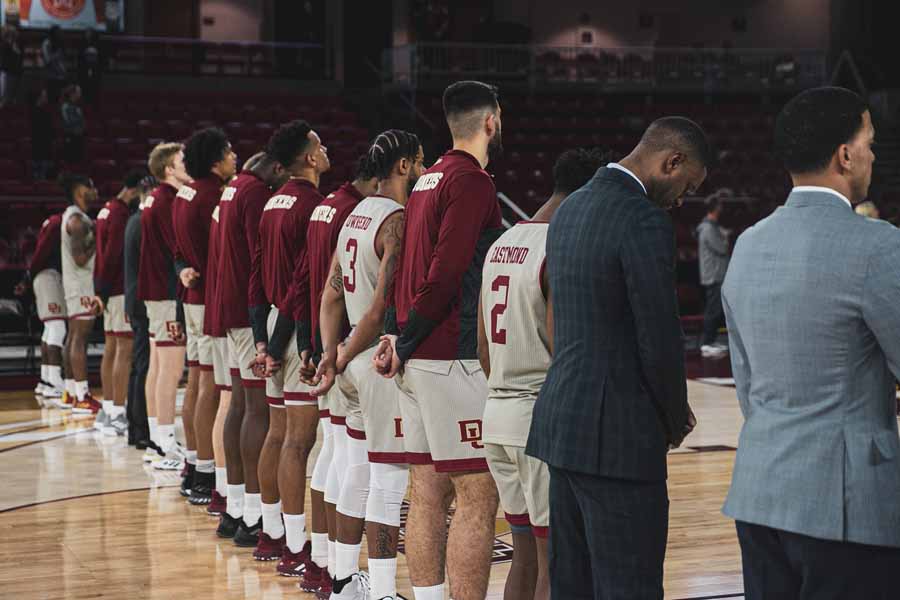Organization on a high level is critical to becoming a great recruiter. While relationships will be your biggest strength, organization is also critical!
You need to work off an ever-changing list of players that you’ve identified, let’s call it your ‘Watch List.’ You will constantly be adding and subtracting names from your personal list. As a staff, begin to build a master list for each graduating class, building lists for several classes in advance. Just because you can’t contact prospects as freshmen or sophomores, that doesn’t mean that you shouldn’t be getting organized and doing your research on underclassmen.
Since there is so much information to gather and keep track of on thousands of prospects, coaches and parents — an organized system is essential, for both you personally and as a staff.
You can save valuable hours by having contact information correct and accessible at your fingertips – you don’t want to waste minutes and hours tracking down correct cell phone numbers and office numbers. When your head coach walks into your office and wants to get so-and-so on the phone right now, they mean right now, not in a few hours. You can’t constantly work off a list of names and numbers scribbled in notebooks or Google every contact along the way.
Every school has a recruiting database– some cost thousands of dollars while others are simple Excel files. Within major programs, databases are updated daily, with players constantly being added and internal rankings changing! Many databases have email features and are able to keep track of more information than you’d ever want to know about. Are all the bells and whistles nice? Sure— but ultimately they’re not all necessary. Having quality, correct info is more important. You can still get results with an Excel file and a Constant Contact email account.
In the first chapter we reviewed the eight ways to start collecting prospect leads, prospects to be added to your Watch List. Once you add names to your database you will need to rank them internally, based on how much attention they need to receive. If prospects aren’t ranked internally, they disappear into a black hole! Your Watch List needs to be printed out and with you daily, accessible on paper, by phone and online. You always want to have your recent updates saved on paper and digitally, as well.
There will be a scramble in the time from when you add prospects to your Watch List… to getting a chance to personally evaluate them for yourself… to getting a feel for their intangibles, their raw athletic talent and their interest level in your program. Your Watch List of juniors and seniors will change weekly or daily!
You need to constantly be adding quality freshmen and sophomores to your database based off observations from games, practices and tournaments as well as from reports produced by regional scouting services that you subscribe to. If you see someone you like, even if they’re too young, add them to the database for future reference!
You are building this list, sending questionnaires and gathering contact information so that you will be prepared to contact them once you are legally able to, according to NCAA rules. It’s best to begin collecting contact information early!
The best recruiters are always three steps ahead in their research and evaluations, and they’re always trying to discover the best players in the area before every other college does, and building those relationships with prep coaches and high schools early.
These Watch Lists are a great point of reference to use when planning your recruiting travel schedules to evaluate prospects. Coaches take their base Watch List out on the road at the beginning of each evaluation period and will add and subtract recruits based on in-person evaluations. Your Watch List will be very fluid, especially early in each recruiting cycle until you can begin to evaluate players in person.
For example, you may have a list of 25-30 top “A” players that you have gathered leads on from trusted sources and are still trying to evaluate another 20 potential “B” players. After those in-person evaluation periods on the road, you will likely drop five to ten “A” players but come back with 10 new names to add, including bumping up some “B” players to “A.” These lists are just a first reference point before evaluations.
Even if you add a prospect to your Watch List because they are on a national or state Top 100 lists, that doesn’t mean that you will think they are a good fit for your system and program. And just because a prospect isn’t on any Top 100 lists, it doesn’t mean that they can’t help you win. Great recruiters can sense talent pretty quickly and it doesn’t matter if they are a 5-star player or an unranked player. If you like their skills—and you think they can help you win– add them to your list. Trust your gut!
It’s better to have a list that’s too big than to have one that is too small, especially for the underclassmen.




